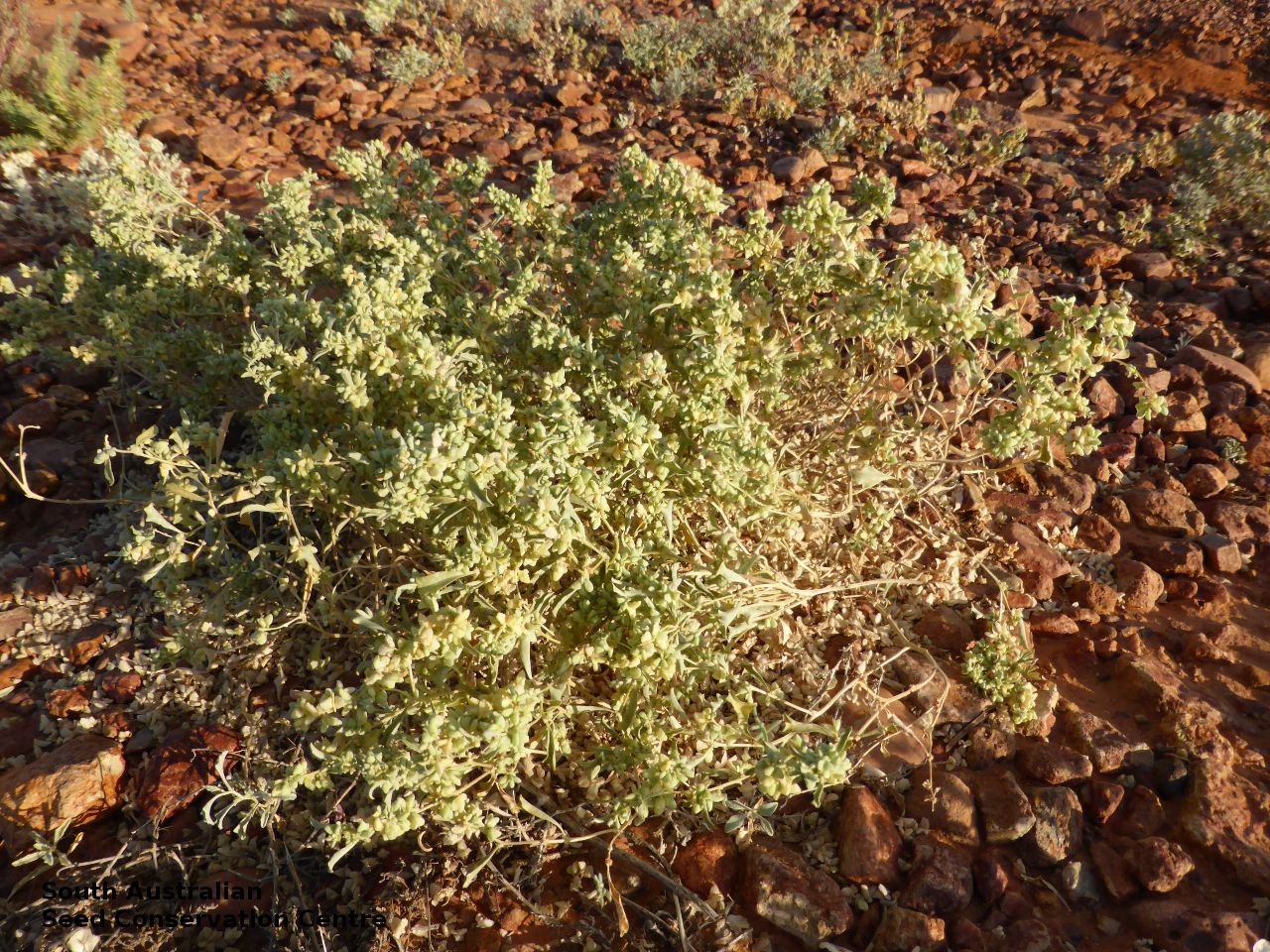
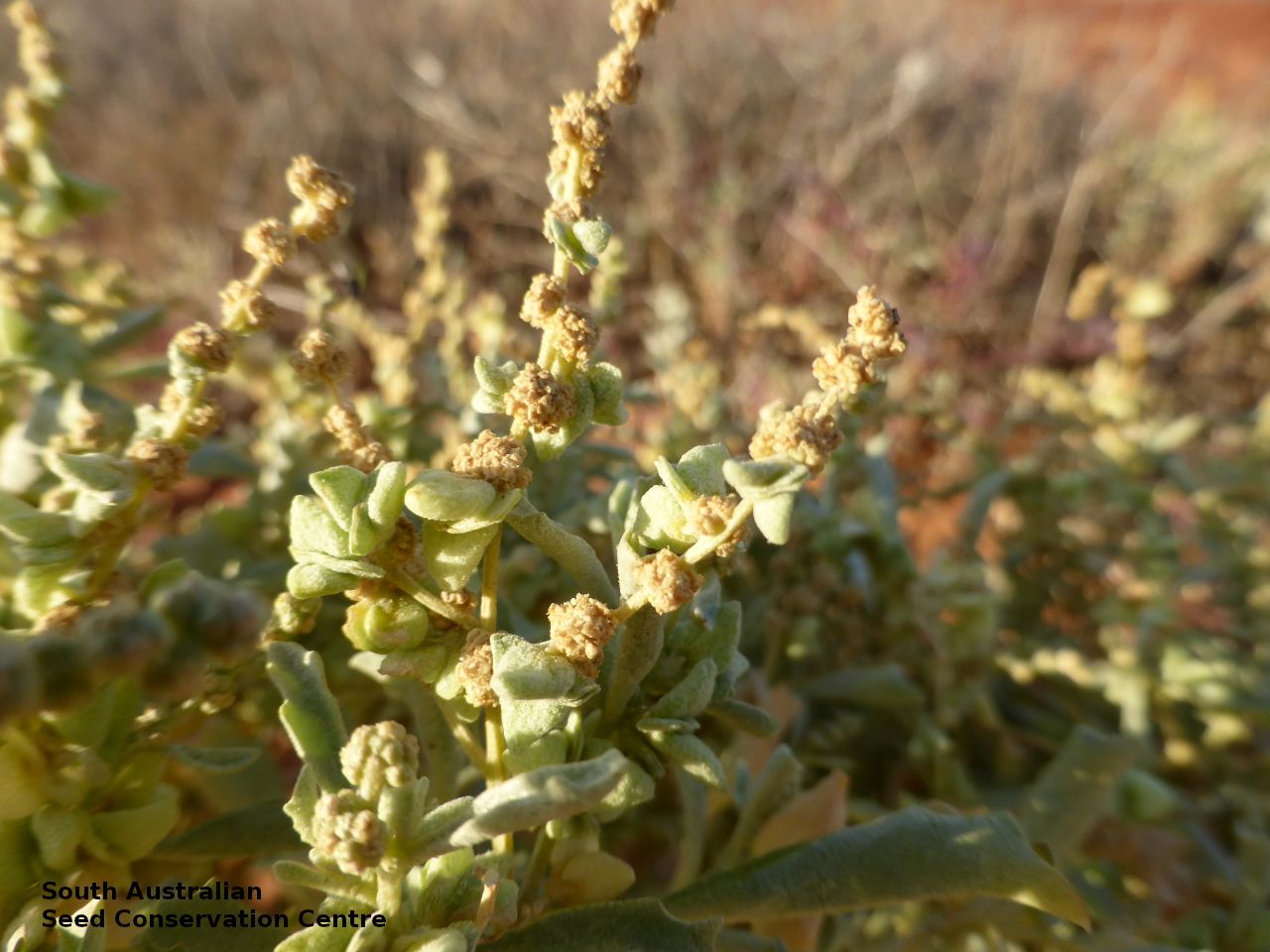
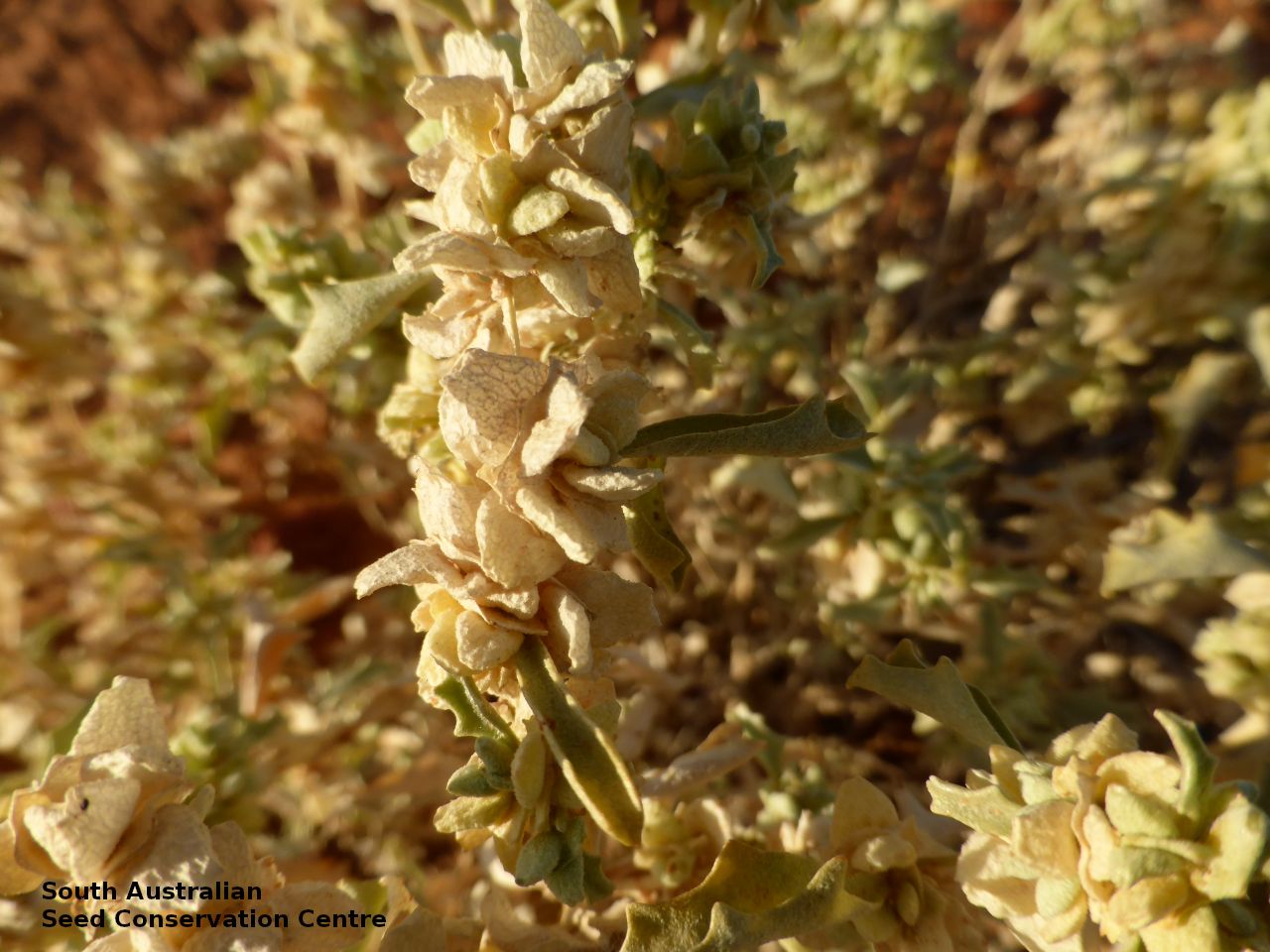
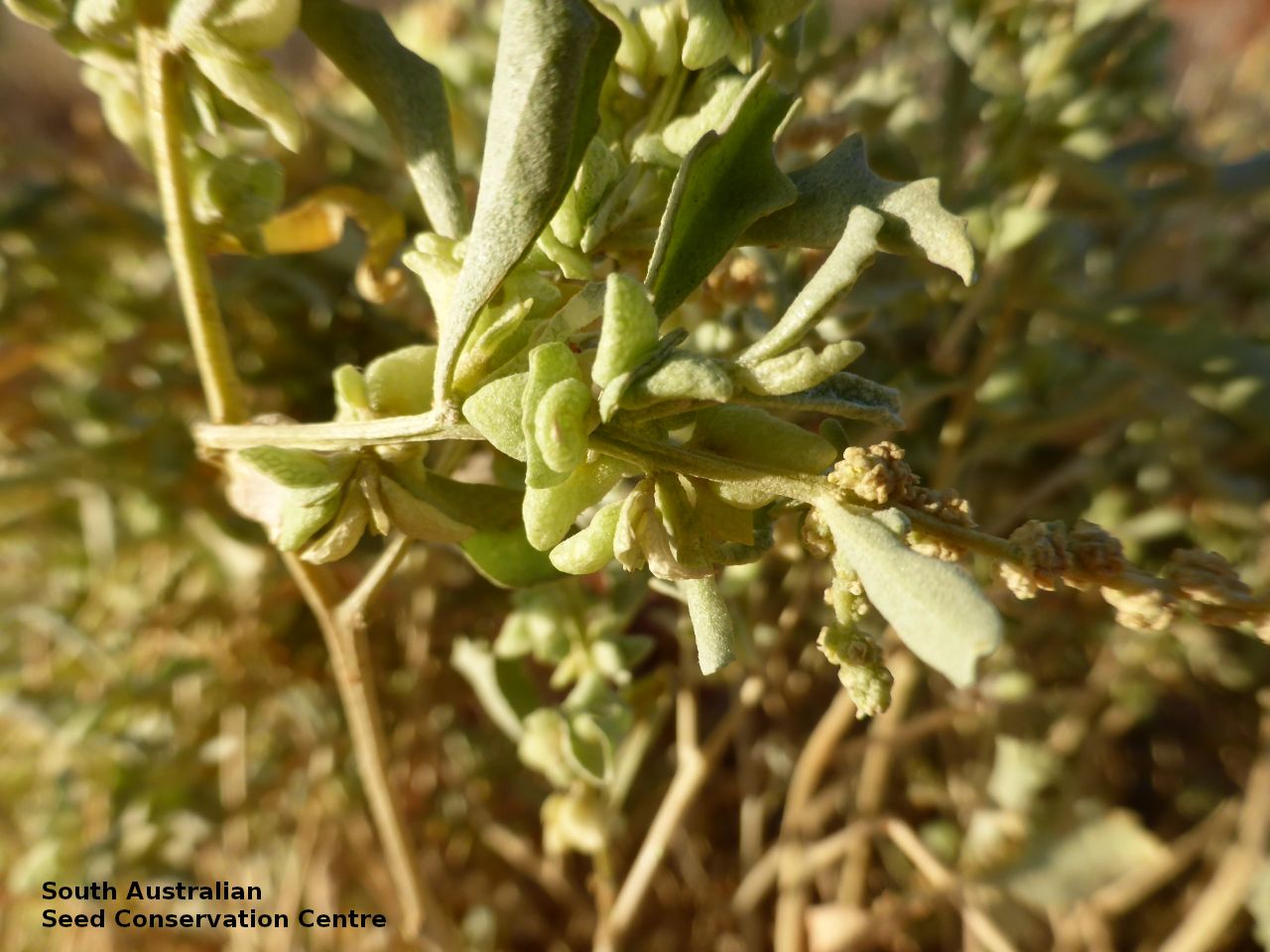
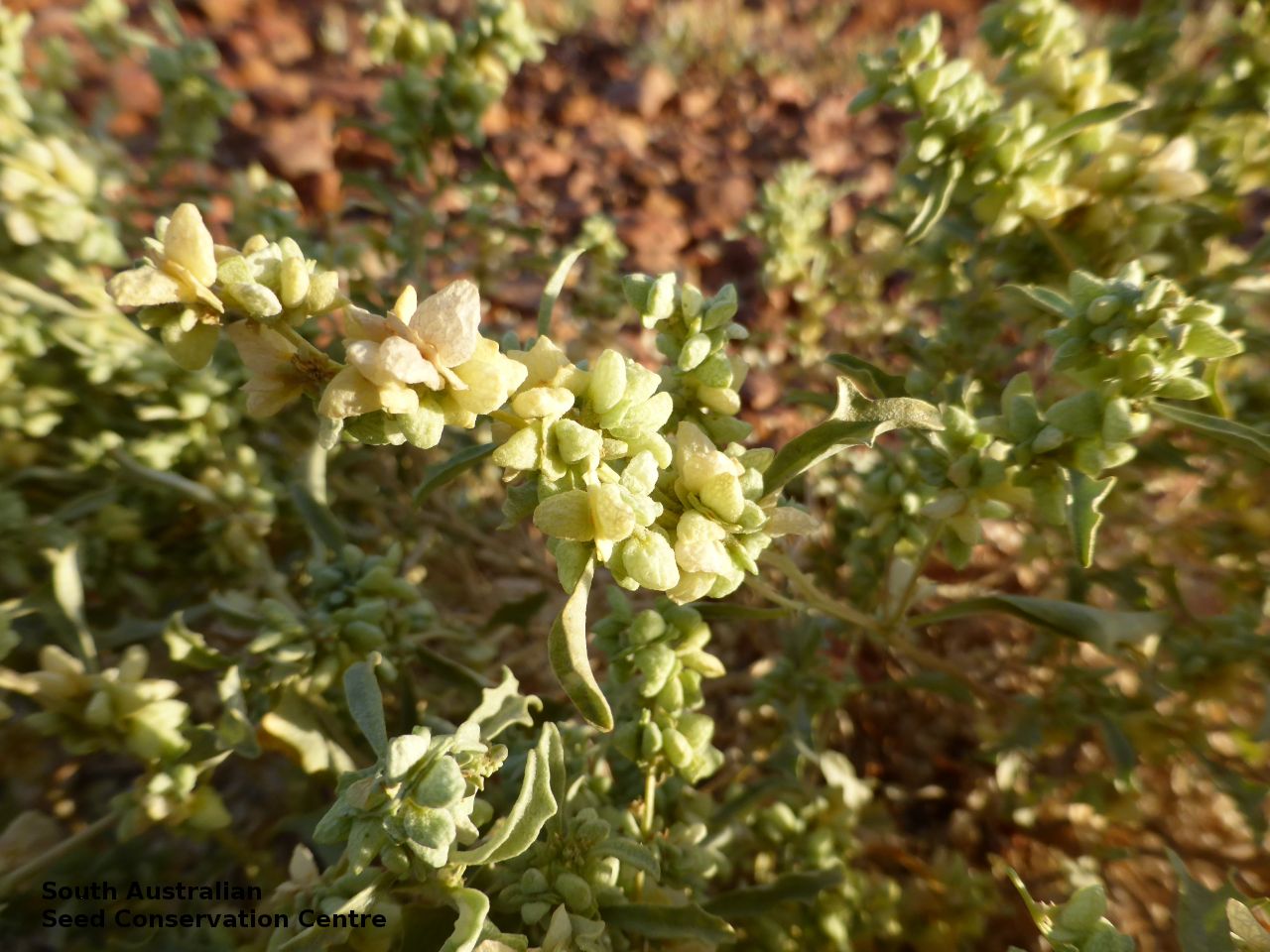
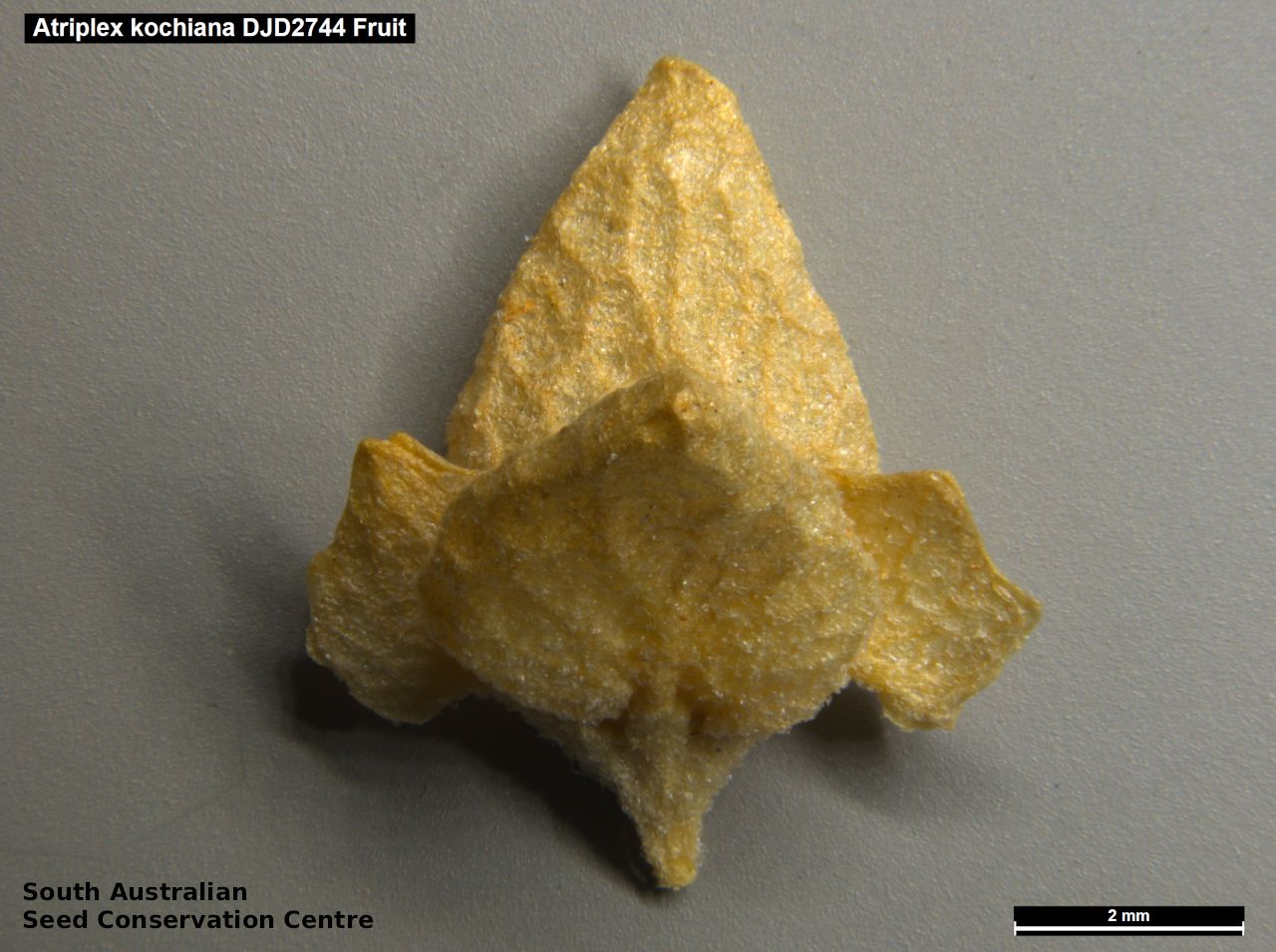
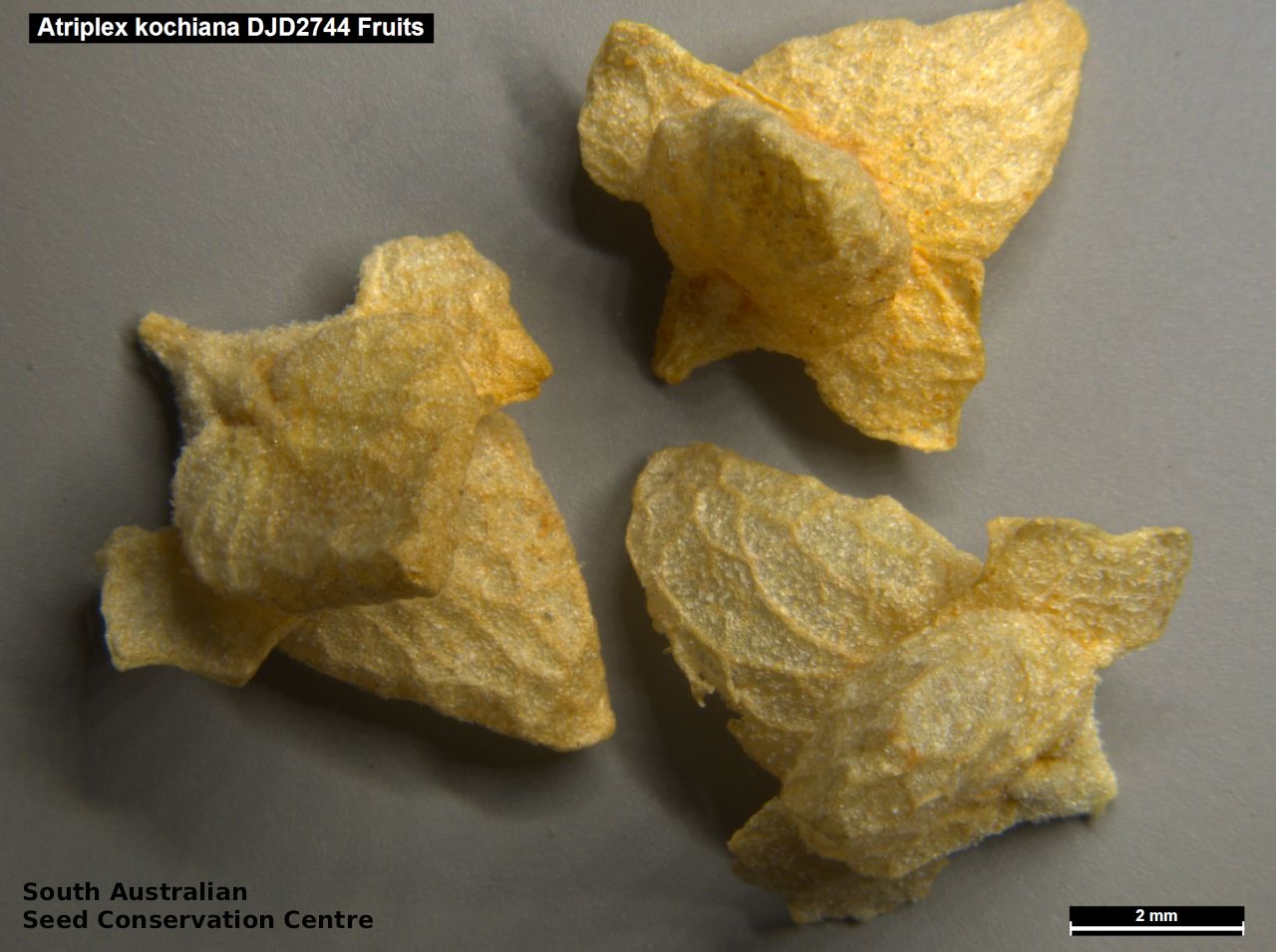
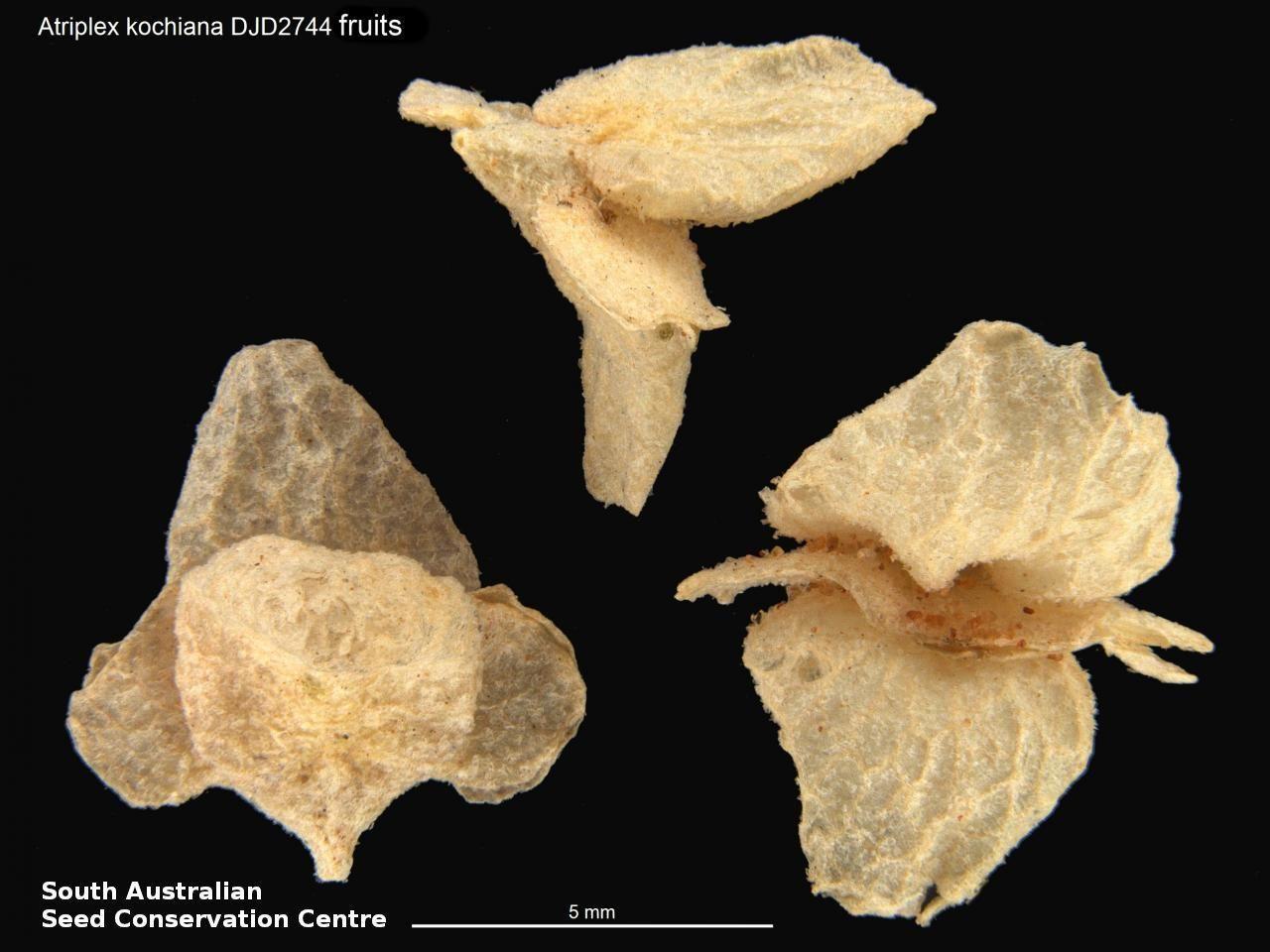

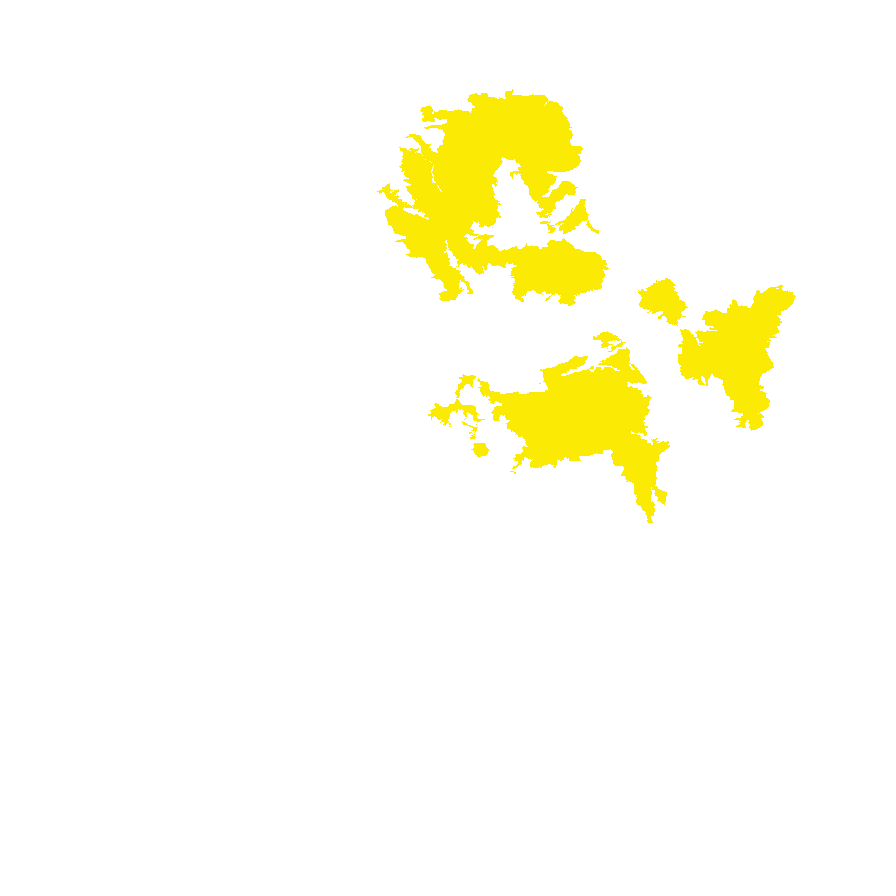
Etymology
Atriplex from the Latin 'atriplexum' meaning an orach, a saltbush; an Ancient Latin name for this plant. Kochiana named after Maxwell "Max" Koch (1854-1925), a German-born Australian botanical collector.
Distribution and status
Endemic to South Australia and found only in a few sites around Lake Torrens and Oodnadatta. Native. Very rare in South Australia.
Herbarium regions: Lake Eyre, Gairdner-Torrens, Flinders Ranges
NRM region: South Australian Arid Lands
AVH map: SA distribution map (external link)
Plant description
Erect rounded annual or short-lived perennial shrub to 40cm high. Leaves thin with a scaly sheen on both surfaces; lamina very broadly obovate; base cuneate. Male flowers in glomerules forming continuous or disjunct slender spikes. Female flowers in axillary clusters. Fruits are pale-brown papery fruit, sessile or minutely stipitate; united towards the base into a compressed broadly turbinate tube 0.5-1.5 mm high and 1.5-2.5 mm wide at the apex, expanding above into thin appressed prominently veined fan-shaped valves with sinuate margins, 5-8 mm wide and 2.5 mm high; appendages inflated, compressed, ovate to orbicular;, cordate at the base, equal to or exceeding the valves; attached at the apex of the tube of each bracteole by a short stipe. Seed embryo type is peripheral.
Seed collection and propagation
Collect seeds between October and November. Collect fruits that are starting to turn pale brown, drying off and papery. Fruits can be collected directly from the bush or from the ground underneath. Place the fruits in a tray and leave to dry for one to two weeks. No cleaning is required if only the fruits are collected. The seed can be stored in the fruit or can be clean further. Rub the fruit gently by hand to dislodge the seeds. Use a sieve to separate the unwanted material. Store the seeds with a desiccant such as dried silica beads or dry rice, in an air tight container in a cool and dry place.
| Location | No. of seeds (weight grams) | Number of plants | Date collected | Collection number Collection location | Date stored | % Viability | Storage temperature |
|---|---|---|---|---|---|---|---|
| BGA MSB | 29,400 (138.5 g) 16,700 (78.57 g) | 9-Sep-2013 | DJD2744 Gairdner-Torrens | 24-Mar-2015 | 95% | +5°C, -18°C |
Number of plants: This is the number of plants from which the seeds were collected.
Collection location: The Herbarium of South Australia's region name.
% Viability: Percentage of filled healthy seeds determined by a cut test or x-ray.